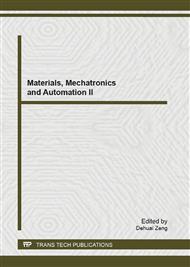[1]
Architectural Institute of Japan, Liu Wenguang, Feng Demin. Isolated structure design [M] Beijing: Seismological Press, (2006).
Google Scholar
[2]
China Academy of Building Research. GB50011-2010 Seismic Design Code [S]. Beijing: China Building Industry Press, (2010).
Google Scholar
[3]
Hu Yuxian earthquake engineering [M] Beijing: Seismological Press, (1988).
Google Scholar
[4]
Zhang Xiaozhi, Xie Lili, Yu Haiying numerical precision ground motion response spectrum and related issues [J]. Earthquake Engineering and Engineering Vibration, 2004, 12: 15 - 20.
Google Scholar
[5]
Guo Mingzhu, Chen Houqun. Venue category and seismic design response spectrum discussion [J]. Earthquake Engineering, 2003, 6: 108 - 111.
Google Scholar
[6]
Zhao Bin, Wang Yayong Some discussion on Seismic Design of Buildings, GB50011 -2010 design response spectrum, Earthquake Engineering, 2003, 1: 13 - 14.
Google Scholar
[7]
Zhou Yongnian, Zheng Hua Zhou, Yu Haiying design response spectrum of long-period segment [J]. Earthquake Engineering and Engineering Vibration, 2004 (2): 15.
Google Scholar
[8]
Japanese seismic isolation structure Association. "Passive damping constructed design Construction Manual [M] Tokyo: JSSI, (2003).
Google Scholar
[9]
JGJ 3-2002 high-rise building concrete structures technical regulations [S]. Beijing: China Building Industry Press, (2002).
Google Scholar
[10]
BSSC. Recommended prov is ion s for seismic regulations for new buildings and other structures (FEMA450) [S]. Washington: FEMA, (2004).
Google Scholar
[11]
Ramirez O M. Development and evaluation of simplified procedures for the analysis and design of buildings with passive energy dissipation system s [D]. Buffalo: S tate University of New York at Buffalo, 2000. 12] ATC 33. NEHRP commentary on the guidelines for the seismic rehabilitation of buildings (FEMA273) [S]. Washington: FEMA, (1997).
Google Scholar


